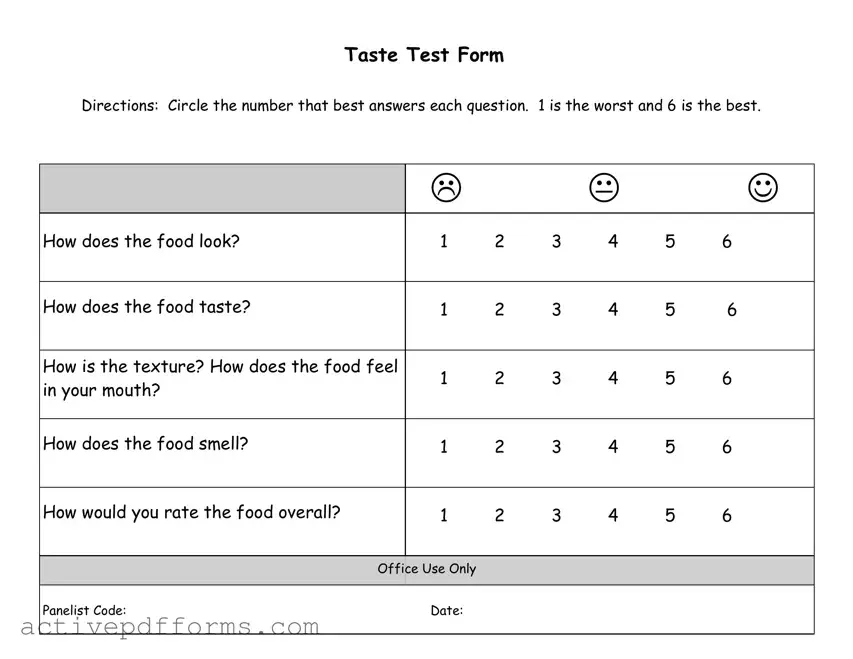In the realm of culinary evaluation, the Taste Test Form occupies a pivotal role, serving as a structured means to gauge individual reactions to food based on several sensory dimensions. By inviting participants to engage in a systematic assessment, it aligns their experiences with a quantifiable metric, ranging from 1, denoting the least favorable response, to 6, signaling the utmost satisfaction. This methodical approach hinges on multiple criteria, including the appearance, taste, texture, and aroma of the food item under scrutiny, culminating in an overarching rating that encapsulates the tester's overall impression. Essential for maintaining objective standards within gastronomic research, product development, and quality control, the form also incorporates sections for administrative use, such as recording the panelist's code and the date of the taste test. The objective is not merely to capture a snapshot of preference but to distill comprehensive sensory inputs into actionable data, thereby laying the groundwork for informed decision-making regarding food products.
